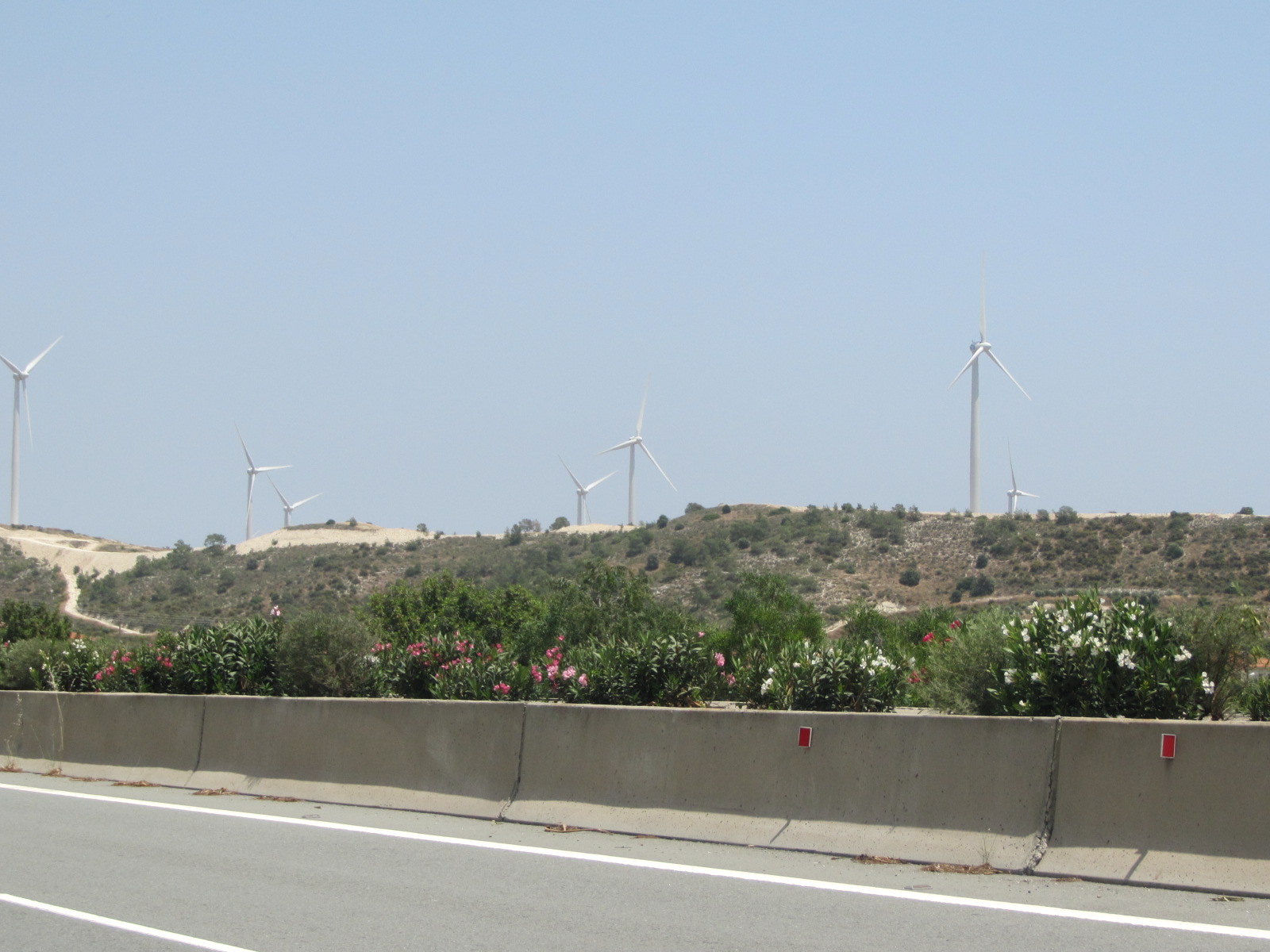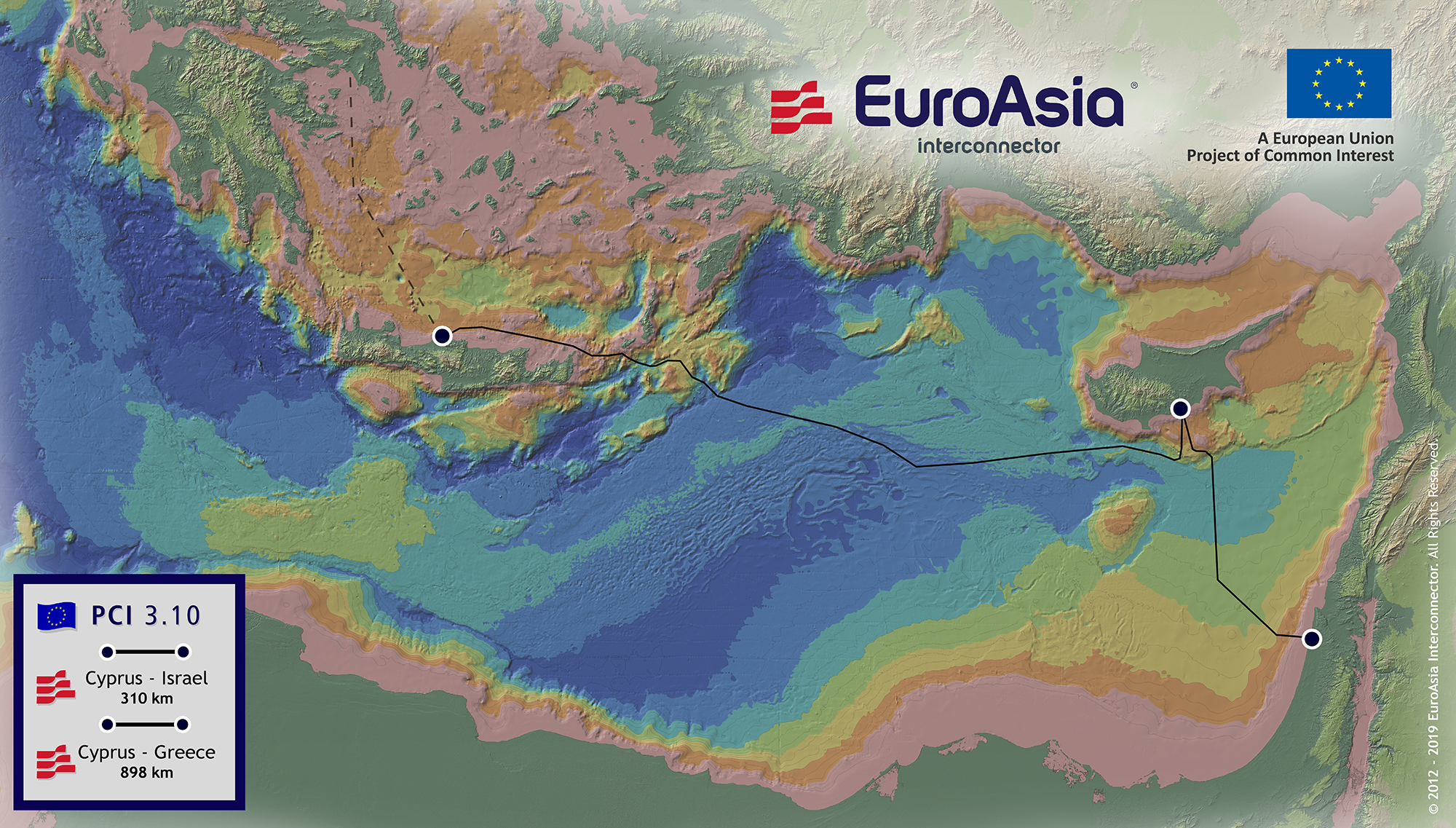Renewable energy in Cyprus on:
[Wikipedia]
[Google]
[Amazon]
Electricity in Cyprus is managed by the

 About 97% of the primary energy use was imported in 2008.IEA Key energy statistics 2010
About 97% of the primary energy use was imported in 2008.IEA Key energy statistics 2010
Page: Country specific indicator numbers from page 48 However, the European Union RES target (2020) for Cypus is 13% giving Cyprus an opportunity to promote its own energy production and increase its energy independence of export in the near future. According to the national action plan Cyprus expects it will also meet this target. According to the IEA key statistics 2010 the Cypriotic energy import in 2008 was 5 TWh higher than the primary energy use. If correct, this corresponds about 18% storage capacity of the annual energy use. There was equal imbalance in 2007.
 With feed-in tariff for large wind power plants the Cypriot National Renewable Energy Action Plan targets 6.8% of renewable electricity share from wind power by 2020. In 2005 there was no wind energy, in 2010 3,5% of electricity. The EU countries average target by 2020 is 14%. A recent scientific article published in Renewable and Sustainable Energy Reviews in 2014 by Prof. Mete Feridun of University of Greenwich in London and his colleagues investigates the long-run equilibrium relationship among international tourism, energy consumption, and carbon dioxide emissions (), and the direction of causality among these variables. The authors report evidence that international tourism is a catalyst for energy consumption and for an increase in the level of carbon dioxide emissions in Cyprus.
With feed-in tariff for large wind power plants the Cypriot National Renewable Energy Action Plan targets 6.8% of renewable electricity share from wind power by 2020. In 2005 there was no wind energy, in 2010 3,5% of electricity. The EU countries average target by 2020 is 14%. A recent scientific article published in Renewable and Sustainable Energy Reviews in 2014 by Prof. Mete Feridun of University of Greenwich in London and his colleagues investigates the long-run equilibrium relationship among international tourism, energy consumption, and carbon dioxide emissions (), and the direction of causality among these variables. The authors report evidence that international tourism is a catalyst for energy consumption and for an increase in the level of carbon dioxide emissions in Cyprus.
 The
The
Electricity Authority of Cyprus
The Electricity Authority of Cyprus (EAC) (Greek: ''Αρχή Ηλεκτρισμού Κύπρου (ΑΗΚ)'') was founded in 1952 by the British colonial government. The 28 private electricity companies of the time were nationalized and absorbed i ...
. Power is primarily generated at three fuel oil-burning stations but the use of distributed renewable energy
Renewable energy is energy that is collected from renewable resources that are naturally replenished on a human timescale. It includes sources such as sunlight, wind, the movement of water, and geothermal heat. Although most renewable energy ...
is expanding.
Overview
Page: Country specific indicator numbers from page 48 However, the European Union RES target (2020) for Cypus is 13% giving Cyprus an opportunity to promote its own energy production and increase its energy independence of export in the near future. According to the national action plan Cyprus expects it will also meet this target. According to the IEA key statistics 2010 the Cypriotic energy import in 2008 was 5 TWh higher than the primary energy use. If correct, this corresponds about 18% storage capacity of the annual energy use. There was equal imbalance in 2007.
Renewable energy
Solar
The Cypriot target of solar power including both photovoltaics andconcentrated solar power
Concentrated solar power (CSP, also known as concentrating solar power, concentrated solar thermal) systems generate solar power by using mirrors or lenses to concentrate a large area of sunlight into a receiver. Electricity is generated when ...
is combined 7% of electricity by 2020, which will be one of the top ones in the European Union markets. Respective target is in Spain 8%, Germany 7%, Greece 5%, Portugal 4% and Malta 1%.
Solar heating is the usage of solar energy to provide space or water heating
Water heating is a heat transfer process that uses an energy source to heat water above its initial temperature. Typical domestic uses of hot water include cooking, cleaning, bathing, and space heating. In industry, hot water and water heated t ...
. Solar heating per capita in 2010 was the highest in Cyprus of all European countries: 611 W per capita. Corresponding value was in other top EU countries: Austria 385,
Greece 253 and Germany 120. In 2010 this capacity was the lowest in the EU, with high unused domestic energy opportunities, in Finland 4, Latvia 3, Estonia 1 and Lithuania 1. Correspondingly the value was in a Scandinavian country Denmark 68.
Net metering implementation
TheCypriot Energy Regulatory Authority
Cypriot (in older sources often "Cypriote") refers to someone or something of, from, or related to the country of Cyprus.
* Cypriot people, or of Cypriot descent; this includes:
** Armenian Cypriots
** Greek Cypriots
**Maronite Cypriots
** Turk ...
(CERA) announced a number of steps aimed at facilitating development of photovoltaics in Cyprus. Among them is the large-scale application of net metering
Net metering (or net energy metering, NEM) is an electricity billing mechanism that allows consumers who generate some or all of their own electricity to use that electricity anytime, instead of when it is generated. This is particularly importa ...
. CERA aims to reduce electricity prices for the households where net metering is applied, via fuel saving and carbon dioxide reduction. Cyprus introduced net metering as pilot program in 2012. The program concerns selected governmental buildings and a few communities only. Its goal was to gain significant experience and knowledge on how to run the electricity grid using net metering.
Net metering research
TheUniversity of Cyprus
The University of Cyprus (Greek: Πανεπιστήμιο Κύπρου) is a public research university established in Cyprus in 1989. It admitted its first students in 1992 and has approximately 7000 students.
History
The University of Cyprus wa ...
announced plans for a second 10 to 13 MW solar park in 2013 and that it will lead a €1.3 million research program into the adoption of net metering across the European Union. The UoC will also lead an EU-funded European research program on promoting net metering policies. The university has signed a memorandum of co-operation with the Bishopric of Tamasos and Orini of the Church of Cyprus, to develop a photovoltaic park in the Cypriot capital of Nicosia
Nicosia ( ; el, Λευκωσία, Lefkosía ; tr, Lefkoşa ; hy, Նիկոսիա, romanized: ''Nikosia''; Cypriot Arabic: Nikusiya) is the largest city, capital, and seat of government of Cyprus. It is located near the centre of the Mesaor ...
.
UN's Cyprus PV system
The United Nations Development Programme (UNDP) in Cyprus installed a 15 KW photovoltaic system at its offices. The park cost US$30,000 and is now connected to the grid as well.Interconnectors
 The
The EuroAsia Interconnector
The EuroAsia Interconnector is a HVDC interconnector between the Greek, Cypriot, and Israeli power grids via the world's longest submarine power cable ( from Israel to Cyprus and from Cyprus to Greece, for a total of ).
Connecting Kofinou, Cypru ...
will connect Israel, Cyprus and Greece with 2000 MW HVDC undersea power cable
A submarine power cable is a Power cable, transmission cable for carrying electric power below the surface of the water.The EuroAsia Interconnector document
/ref> It is a leading Project of Common Interest of the European Union and also priority Electricity Highway Interconnector Project.EU Projects by country
/ref>Funding for Projects of Common Interest
/ref> Cyprus, as last EU member fully isolated from energy interconnections will be connected to European network. The
/ref> It is a leading Project of Common Interest of the European Union and also priority Electricity Highway Interconnector Project.EU Projects by country
/ref>Funding for Projects of Common Interest
/ref> Cyprus, as last EU member fully isolated from energy interconnections will be connected to European network. The
EuroAfrica Interconnector
EuroAfrica Interconnector is a HVDC interconnector and submarine power cable between the Greek, Cypriot, and Egypt power grids.Egypt, Cyprus, and Greece with another 2000 MW HDCV undersea power cable. These projects will allow Cyprus to use cheaper and cleaner electricity from the mainland rather than burn imported oil at less efficient and dirtier generators.
See also
*Block 12
Aphrodite gas field is an offshore gas field off the southern coast of Cyprus located at the exploratory drilling block 12 in the country's maritime Exclusive Economic Zone. and bordering the Yishai gas field, located in Israeli territorial wate ...
* Solar power in Cyprus
Solar power in Cyprus is more available than in almost all of the rest of the Europe.
In 2010, Solar heating per capita in Cyprus was the highest among all European countries, with 611 W per capita.Renewable energy by country
This is a list of renewable energy topics by country and territory. These links can be used to compare developments in renewable energy in different countries and territories and to help and encourage new writers to participate in writing about ...
References
{{DEFAULTSORT:Cyprus